Which LED lamps are better to choose: types, characteristics, choice + best models
LED lamps are economic, effective elements for arranging a practical and comfortable household lighting system. They provide good light flow, consume a minimum of electrics, withstand impressive operational loads and work for a long time.
These qualities make products attractive to consumers and stimulate growth in demand for products. However, choosing the appropriate option from the variety of assortment is not so simple, agree? We will help you determine the best LED lamps that are optimally suited for specific operating conditions.
The article provides a detailed classification of LED-fixtures, the parameters and characteristics that are definitely worth considering when choosing devices are indicated. In addition, we have prepared a review of the best manufacturers whose lamps have proved their quality and reliability in practice.
The content of the article:
The main varieties of products
Unlike traditional incandescent lamps, LED sources do not have strict design features and are available in a variety of, sometimes very unexpected, configurations. That allows you to embed them in modern and rare lamps of any type.
Classification is carried out into three subspecies. The first includes general-purpose products. They differ in high-quality light flux with a scattering angle from 20 ° to 360 ° and are intended for lighting offices and residential premises for various purposes.
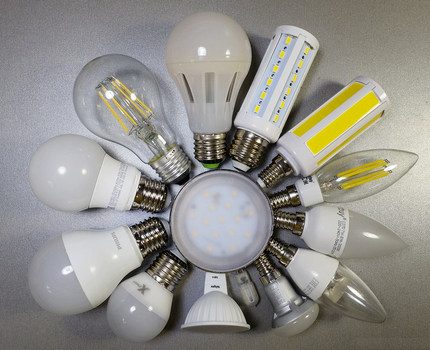
The second unit includes directional light modules operating on one or more LEDs.The use of these products allows you to create accent lighting and highlight some areas or interior elements in the room.
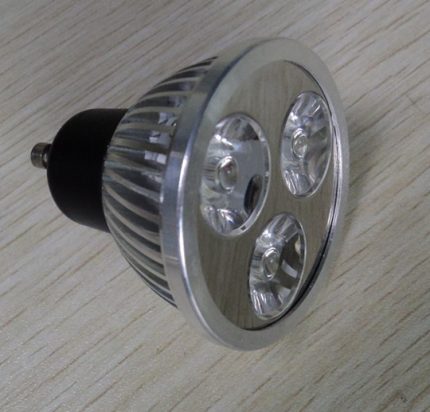
LED linear type lamps outwardly resemble classic fluorescent devices. They are made in the form of tubes of different lengths.
They are mainly used in technical rooms of a house or apartment, in offices and trading floors, where bright and economical lighting is required, which can emphasize all the details.
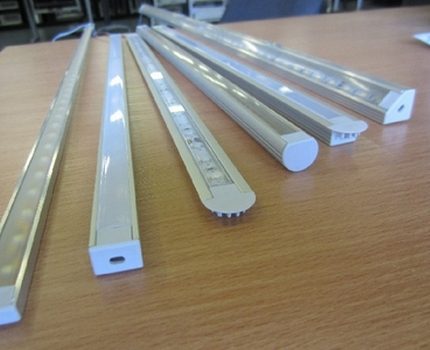
With the help of linear and other types of LED modules, it is possible to correctly and beautifully equip high-quality lighting of enclosed spaces and local areas where fire safety is a priority.
Types of LEDs Used
Additionally, the devices differ from each other in the type of diodes installed in the lamp housing.
Indicator LED elements are considered obsolete and are extremely rare in everyday life. The quality of the light output and the general safety of these products do not reach the requirements accepted today.
SMD chips belong to the most common and most widely used species. The minimum size and weak basic heating of the working elements make SMD lamps the most attractive among analogues.
Their application has no restrictions and is allowed in any systems and conditions.
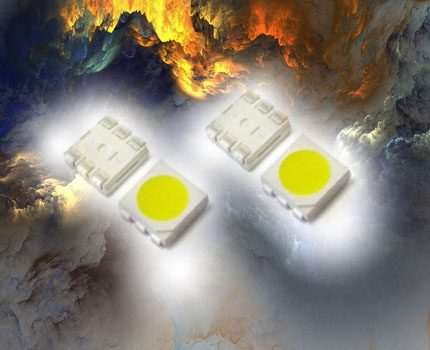
Units operating on high-power diodes of 1.3 and 5 watts are very productive in some situations.
But the high level of heating during operation and the difficulty of organizing the correct heat removal from a small case significantly reduce their popularity.
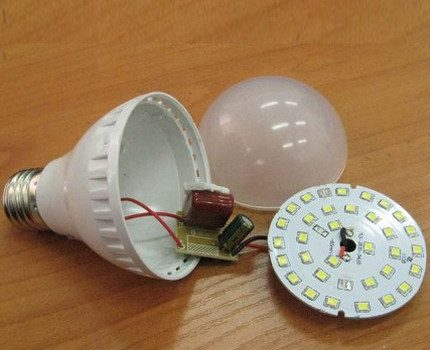
COB diodes Is an innovative chip manufacturing technology. They are developing it now very actively. Due to the direct mounting of the diodes on the board, heat dissipation increases significantly, and the overall reliability of the device increases.
Thanks to an improved optical system, the light flow spreads more evenly and creates a pleasant background glow in the room.
Filament - A progressive type of chip, invented in 2013-2014 by a group of scientists. Designed exclusively for lighting.
It is fully used for arranging original and unusual decorative illumination of household and industrial premises for various purposes.
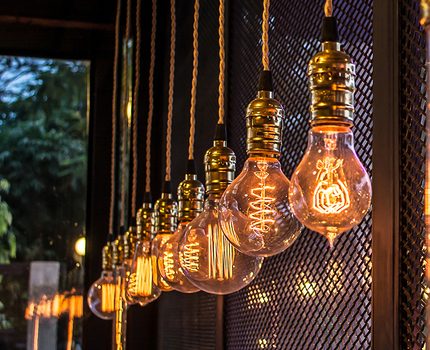
It provides a luminous spectrum, pleasant to the human eye, in the room, similar in characteristics to the burning effect of a traditional incandescent lamp. In this parameter it is several times superior to similar products of SDM and COB type.
The company stores are sold at a reasonable price and are considered a practical option for an economical light source.
Product Specifications
LED lamps have a wide range of technical specifications.
The main criteria for determining the effectiveness and purpose of the modules are:
- base element type;
- power level and light flow;
- color temperature gamut;
- basic color rendition;
- dispersibility.
Knowing the features of these parameters, choosing the best option for LED lighting is not difficult.
Types of current basement
The choice of base is carried out for a specific lamp available. The bulk of the products, designed to replace the classic incandescent lamps, has a simple screw base with marking E14with a base E27 and E40. This size and configuration are considered universal.
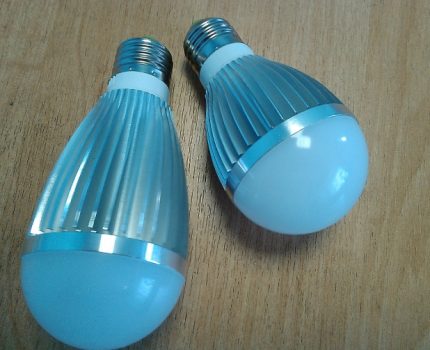
If you need to change the halogen type lamps, you will need LEDs with a pin base class G4, GU5,3, GU10.
For embedding lighting in furniture sets, sideboards or cabinets, products with a GX53 base are suitable.
Tube Radiators
Radiator devices that ensure the correct heat dissipation in modern bulb LED lamps are:
- aluminum - ribbed or smooth;
- composite;
- ceramic;
- plastic ones.
Ceramic do not conduct current and are more expensive than everyone else.
Composite qualitatively remove heat, do not pose a danger to humans and are sold for reasonable money.
Aluminum They are considered reliable and efficient, but at the same time they conduct electricity well and can cause injury or burns in direct contact.
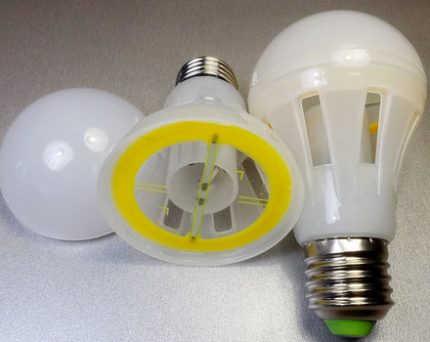
Plastic belong to the cheapest segment, however, they are pretty good at coping with the tasks. Their main trump card is a low price, which, in spite of everything, attracts buyers.
Features of the power of devices
The luminous efficiency of LED products is measured in watts. Consuming a minimum amount of electrics, LED lamps generate a record high amount of light, almost 10 times the capacity of classic incandescent modules.
One ice product with a power of 9-10 W ensures an optimal light flux and successfully replaces a 100-watt Illich lamp.
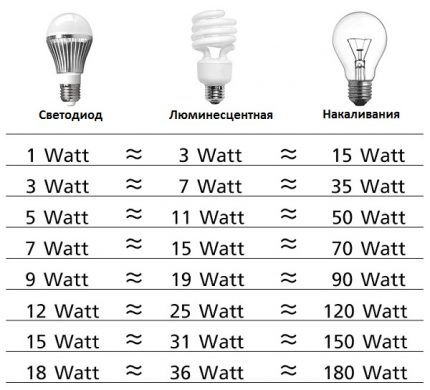
This allows customers, without prejudice to their own comfort, to receive high-quality lighting and significantly save on utility bills.
Light flow quality
The luminous flux produced by standard LED products varies in Lumens. A lamp with a diameter of 5 millimeters produces from 1 to 5 lm of directional light.
Brands always indicate on the packaging the level of radiation intensity of their products. The presence of this information simplifies the choice of a lamp for a specific task.
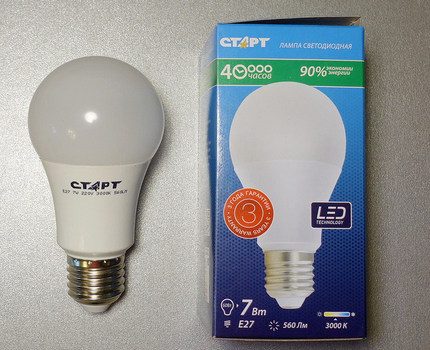
To make it easier to navigate, you need to remember that the standard 100-watt incandescent module provides a light flux of 1000 lm.
If a smaller number is indicated on the box of the LED product, then the room lighting will be weaker. Large indicators indicate that the lamp will easily and efficiently illuminate a large room.
Color Temperature Nuances
The peculiarity of LEDs is that they have different light temperature. This makes it possible to choose the most suitable shade of the emitted light flux for each individual room, depending on its purpose.
Even the classic white gamut appears in several colors at once:
- 2700K - soft white with a delicate reddish tint. It creates an atmosphere of calm, warmth and comfort in the room. Most often found in lamps of low and medium power.
- 3000K - warm white with a slight yellowness. Great for living rooms, nursery, bedroom or living room. Gives a feeling of security and relaxation.
- 3500K - natural neutral white. Does not distort color perception and does not exert strain on the eyes.
- 4000K - cold white. Effectively illuminates the space, emphasizes cleanliness, gives all objects clear contours. Stimulates performance and brain activity, suitable for classrooms, offices, etc.
- 5000-6000K - Classic daylight white with high brightness. It is considered too tough for residential premises and is used to illuminate large spaces of workshops, industrial complexes and greenhouses.
- 6500K - cold day with a pronounced bluish tint. It promotes concentration and instills some anxiety. It is applied to hospitals and various technical rooms.
In addition to the above options, there are color LED modules on sale that allow you to equip an exclusive home lighting system and create an individual lighting option for each corner of the apartment or house.
Color Rendering Index Description
The basic color rendering coefficient is indicated by the acronym CRI (Color Rendering Index) and numbers from 0 to 100. It shows how clearly and correctly the shades of the surrounding things and objects of the lamp convey.
A module with an indicator of 100 units does not create any distortion at all and shows all the colors exactly. However, an impressive amount will have to be paid for such an item.
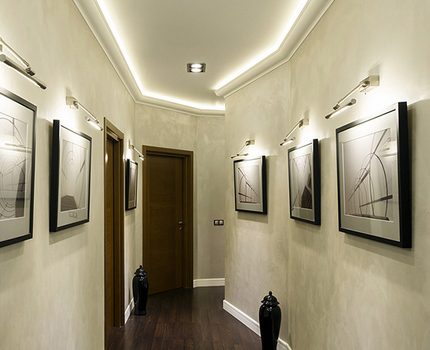
As far as appropriate, the client will have to decide for himself. Specialists advise not to overpay the extra money and select home light sources in the CRI range from 80 and a little higher.
Flow dispersion parameters
All LED elements shine clearly in front of them. The minimum number of light waves deviates to the side and creates a small halo.
The working angle of scattering of each module directly depends on how the crystals are located inside the lamp and how many there are.
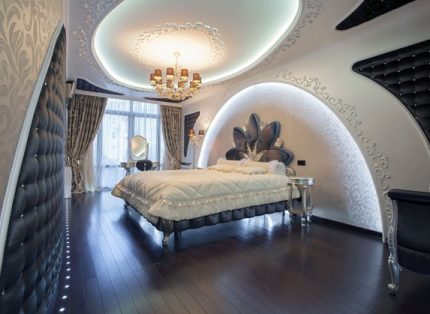
Such characteristics make it possible to obtain both a beam of light directed at a certain point, and a soft, diffused glow, which has a calm, relaxed rest.
For lamps for various purposes, there are optimal indicators of light scattering. It is recommended to place products with a scattering angle of 90-180 ° in the ceiling lamp or chandelier that creates the background lighting.
With this approach, it will be possible to correctly and maximally brighten the center of the room, and leave the corners and perimeter of the room slightly darkened.
In devices designed to illuminate a small area, for example, a place for reading or spotlighting paintings and other elements of the interior decor, it is worth using products that supply a narrow beam with a scattering coefficient of 30 ° to 60 °.
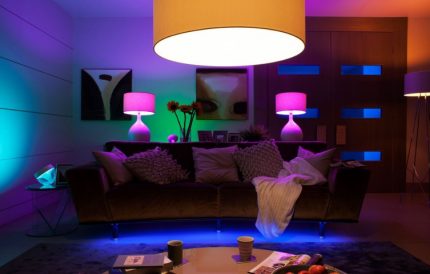
In decorative sconces or fixtures with slots, you can put a lamp with a scattering angle of 360 degrees. It will create an unusual glow effect, changing depending on the viewpoint of the room.
A few words about the service life
The basic working life of LED products is measured in hours. Serious manufacturers are very proud of this parameter and take it to the front of the package. The numbers indicate how long the purchased product will work under the right operating conditions.
The average life of LED bulbs is 10 years or 30,000 hours. In products of a more expensive segment, this figure reaches 50-60 thousand hours, which equals 15-18 years.
True, the manufacturer does not inform the buyer that the LEDs have the ability to fade and, over time, lose their original brightness.
For branded appliances, this happens closer to the end of the service life. In unnamed Chinese light bulbs, such an unpleasant moment may appear already in the first 6 months after purchase.
Current manufacturers and models
The leading positions in the market segment of LED equipment and related components are occupied by European concerns Philips and Osram.
They offer the customer the widest range of certified products that meet all the most stringent international requirements for the quality of light sources.
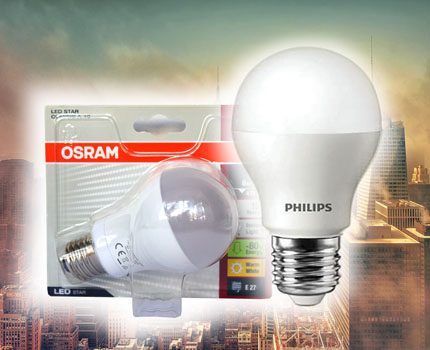
The company's products demonstrate normal quality at a low price. Feron from Russia. The range of LED products represents lamps of various configurations, including modules designed for installation in furniture.
Brand-name ice lamps produced under the brand deserved success Gauss domestic company Vatron. The brand sells both budget and premium modules and gives a 3-year warranty on its products.
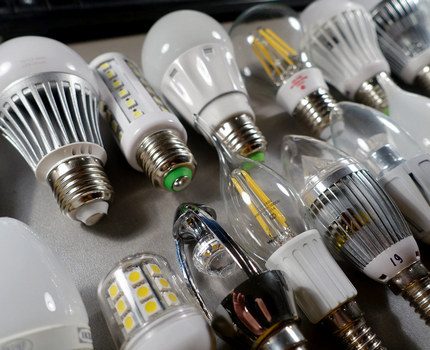
Russian company Era - A newcomer to the LED market, however, its consistently high-quality products have already managed to appeal to the client.
Now the company is actively developing production and in the future is going to crowd out competitors and even get ahead of them in the battle for the buyer.
Useful tips for choosing
Choosing a lamp that works on the basis of LED elements, you need to find an environmentally friendly, economical and safe product with a suitable glow temperature, no flicker, optimal light output and the right angle of dispersion.
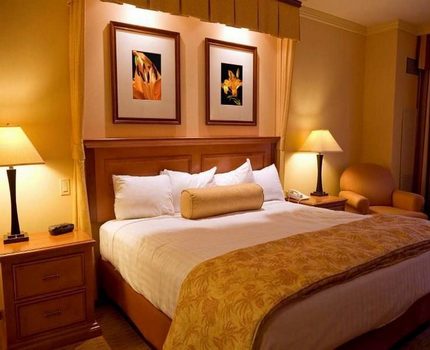
If you want to illuminate a living room, it is worth taking a module from the warm spectrum with the marking 2700-3200 K. This will provide a pleasant atmosphere in the house or apartment, which is conducive to a long stay in the rooms for the purpose of relaxation or socializing.
In the bath, kitchen, corridor or bathroom, you can install lamps 3700-4200 K. They will fill the room with a bright, neutral-white light, reminiscent of the morning sun.
All objects with this lighting option will gain additional clarity and will look a little tougher. But this will not give undue strain on the eyes, because in such rooms a person does not spend a lot of time.
When the goal is to qualitatively illuminate utility compartments, it is appropriate to use lamps from 6000 K and above. They will deliver a stream of light to every corner and not a single centimeter of the room will remain in the shade.
Flickering is one of the weak points of LED modules.Popular manufacturers claim that this flaw is peculiar only to nameless Chinese products, and branded products do not have it.
Verifying the veracity of these words is very easy. It is enough to screw the lamp into the base at the time of purchase and bring the smartphone camera to it. When the pulsation of the bulb, the image that appears on the screen, necessarily flickers.
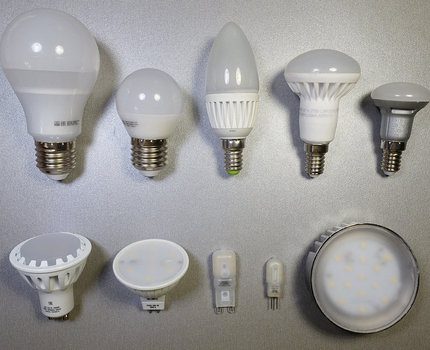
In company stores, when purchasing ice lamps, customers are provided with a guarantee from the manufacturer. Usually it lasts from 1 year to 3, depending on the brand.
In order to use it and replace a failed product with a working analogue, the buyer will have to keep a cash receipt and coupon, where the seller noted the date of purchase and assured her with his signature.
Conclusions and useful video on the topic
Companies leading in the market of lighting equipment in the segment of household LED elements. The main pros and cons of branded products:
What mistakes do customers make when purchasing LED products? How to avoid them and get the right LED products that will work long and reliably. Memo for potential buyers:
You can talk about which types of modern LED lamps are better for a long time. There is no definite answer to this question. It all depends on the purpose of the lighting system and the area of its use. Based on these parameters, it is worth choosing a suitable led-product.
It is not necessary to purchase anonymous products for the purpose of saving. It is wiser to prefer a module of a trusted brand that has proven itself in the market.
Have something to supplement, or have questions about choosing LED lamps? You can leave comments on the publication, participate in discussions and share your own experience in using LED-lamps. The contact form is located in the lower block.

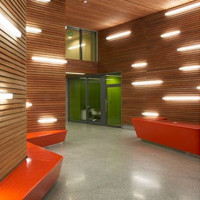 T8 LED lamps: characteristics, comparison with fluorescent + best manufacturers
T8 LED lamps: characteristics, comparison with fluorescent + best manufacturers 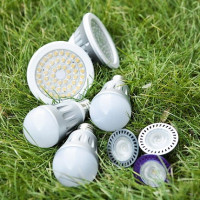 LED lamps for the home: which diode bulbs are better, LED lamp manufacturers overview
LED lamps for the home: which diode bulbs are better, LED lamp manufacturers overview 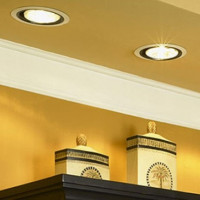 LED Ceiling Lamps: types, selection criteria, best manufacturers
LED Ceiling Lamps: types, selection criteria, best manufacturers 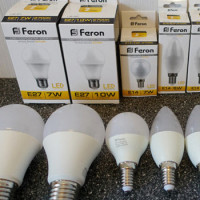 LED lamps "Feron": reviews, pros and cons of the manufacturer + best models
LED lamps "Feron": reviews, pros and cons of the manufacturer + best models 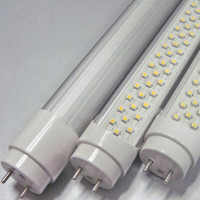 Replacing fluorescent lamps with LEDs: the reasons for the replacement, which are better, replacement instructions
Replacing fluorescent lamps with LEDs: the reasons for the replacement, which are better, replacement instructions 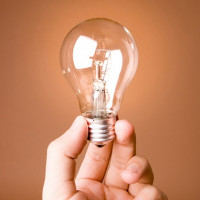 Incandescent lamps: types, specifications, how to choose the right
Incandescent lamps: types, specifications, how to choose the right  How much does it cost to connect gas to a private house: the price of organizing gas supply
How much does it cost to connect gas to a private house: the price of organizing gas supply  The best washing machines with dryer: model rating and customer tips
The best washing machines with dryer: model rating and customer tips  What is the color temperature of light and the nuances of choosing the temperature of the lamps to suit your needs
What is the color temperature of light and the nuances of choosing the temperature of the lamps to suit your needs  Replacement of a geyser in an apartment: replacement paperwork + basic norms and requirements
Replacement of a geyser in an apartment: replacement paperwork + basic norms and requirements
Good day!
As for me, I prefer warm, yellow lighting. In general, I consider the cold gamut of the day type unacceptable for living quarters. With this kind of lighting you are in the shade, all around is dim. The yellow spectrum is very close in sensations to sunlight, the mood in rooms with this lighting option improves. LED lamps are extremely energy efficient, and they are also long-playing in terms of service time. Savings are good for the family budget.
I believe that in such things there is a future, their energy consumption is minimal. LED bulbs are almost everywhere at my place, even on the street, they do not deteriorate from frost. The color temperature of the lamps is 3500K. I think this is the best option, it illuminates well, and the eyes are comfortable, which is important, I'm sure. The price of the lamps is quite acceptable, although not too affordable, but it is definitely worth buying. Service life is many times longer than conventional.
I’ve hooked for myself a long time ago: LED lamps bring considerable savings, despite their cost. I use lamps of the Gauss company. The manufacturer promises that their service life can reach 25 years, although this, of course, is hardly believed.However, after 4 years of use, there are no complaints about their work. And the lighting is much more pleasant for the perception of the eyes.